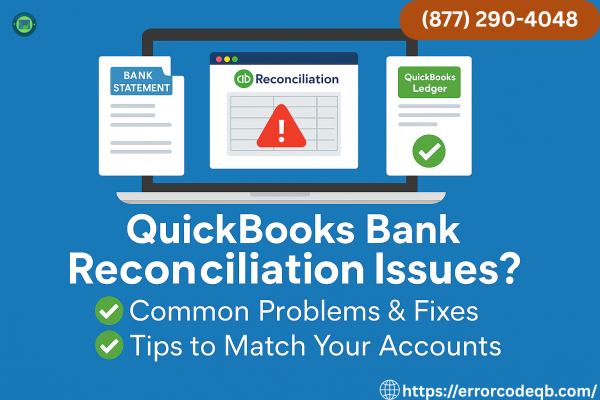By comparing your financial records with your bank statements, QuickBooks’ reconciliation process—which is vital—helps to guarantee their correctness. Correct execution may help to avoid mistakes, spot fraud, and preserve financial stability. These are some key pointers to help QuickBooks’ reconciliation procedure go error-free and seamless.

Appreciate the Reconciliation Procedure
One should know what reconciliation is before beginning. To make sure they match, you compare QuickBooks transaction data with your bank statements. Any disparities have to be looked at and fixed if you want your books correct.
Compile Essential Files
Have all the required records available, including bank statements, credit card statements, receipts, and invoices; furthermore, have any other financial records pertinent to the reconciliation period ready.
Check Open Balances
Make sure your QuickBooks opening balance matches your bank statement amount. Should a disparity exist, you might have to look at past reconciliations for mistakes or missing transactions.
Enter All Transactions Before Correcting
Make sure all of your deposits, payments, and expenditures are recorded in QuickBooks before beginning reconciliation. Missing transactions may cause variances and complicate reconciliation.
Look for double entries.
Duplicate purchases might throw off your reconciliation. Frequent inspection and removal of duplicate entries guarantees correctness and helps to avoid needless uncertainty.
Match Transactions Conscientiously
Match every QuickBooks transaction with the matching item on the bank statement as you reconcile. To prevent inconsistencies, pay great attention to amounts, dates, and transaction kinds.
Examine Unresolved Transactions
Look at why a transaction is outstanding if it isn’t matched or cleared. A missing entry, a data input mistake, or a time disparity might all be the cause.

Correct for interest and bank fees.
QuickBooks cannot automatically record interest, service charges, or bank fees. Add them by hand to guarantee correct reconciliation.
Apply the Reconciliation Report.
Create a reconciliation report after the procedure has finished. For audits, financial assessments, or future debugging inconsistencies, this report functions as a log of your efforts.
Quickly Correct Errors
If you discover a discrepancy during reconciliation, take quick action. Typical problems are:
- Missing transactions
- wrongly classified costs
- transactions entered in the incorrect period
- bank mistakes Early identification and correction of these problems will help to avoid difficulty in future reconciliations
Steers clear of deleting transactions
Edit transactions that seem erroneous to provide proper information rather than removing them. Eliminating entries might cause holes in your financial records and complicate reconciliation.
Often Reconcile
Regular account reconciliation helps to avoid disparities from mounting. Maintaining financial correctness and keeping current with your company transactions calls for monthly reconciliation.
Features of QuickBooks’ Bank Feeds
QuickBooks lets you automatically import transactions and link your bank accounts. This function accelerates the reconciliation process and reduces hand data entering mistakes.
See Professionals As Needed
See a QuickBooks specialist or accountant if you run into consistent reconciliation problems or complicated variances. Professional advice may assist in guaranteeing that your books stay compliant and correct.
Save a copy of your records.
Back up your QuickBooks data before beginning the reconciliation procedure. Should a mistake or inadvertent data loss occur, a backup guarantees seamless restoration of your financial information.
At last
Maintaining correct financial records in QuickBooks depends on reconciliation. These suggestions can help you to guarantee that your books stay accurate and current, simplify the procedure, and lower mistakes. Frequent reconciliation improves the general financial situation of your company and facilitates wise financial choices.